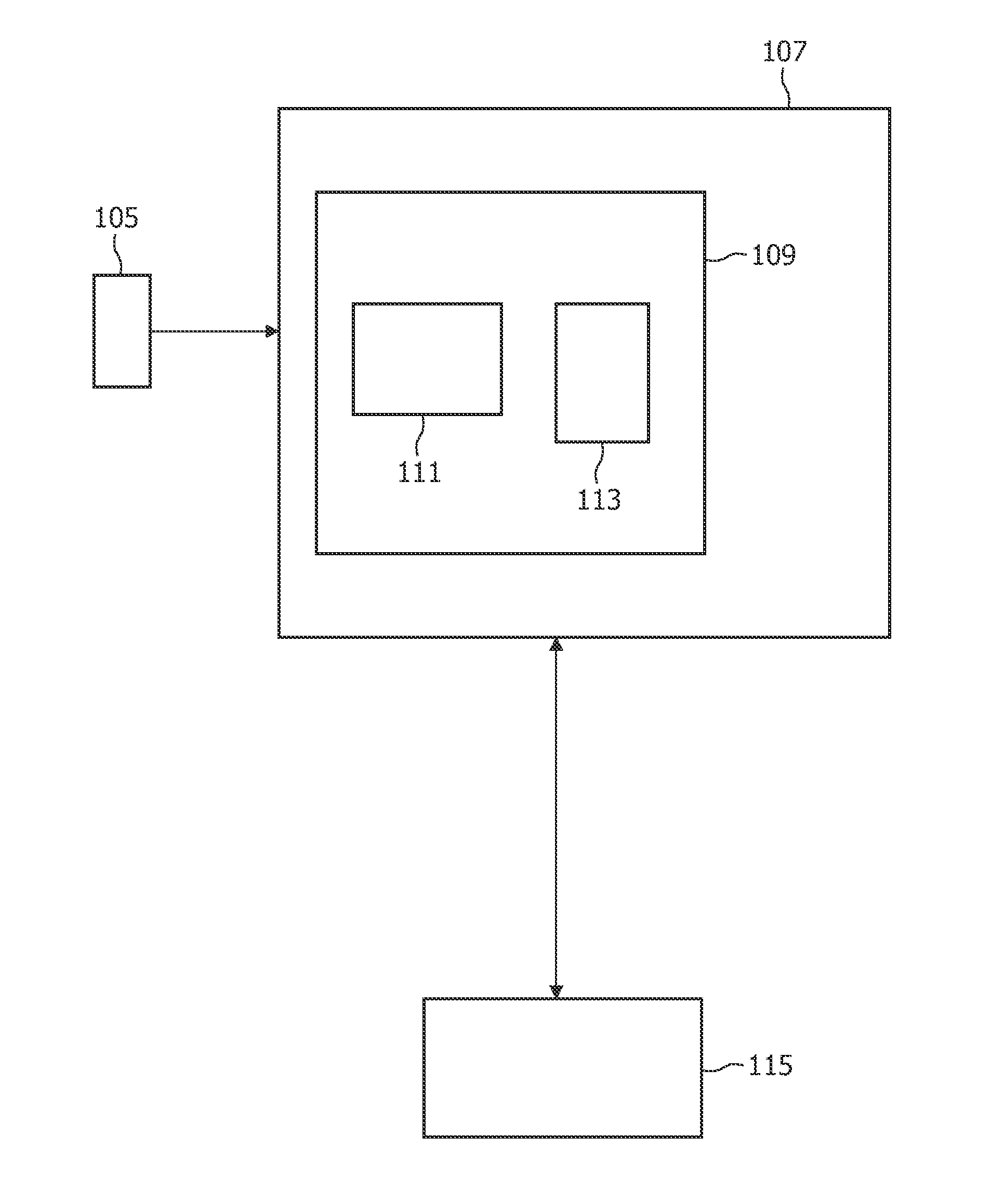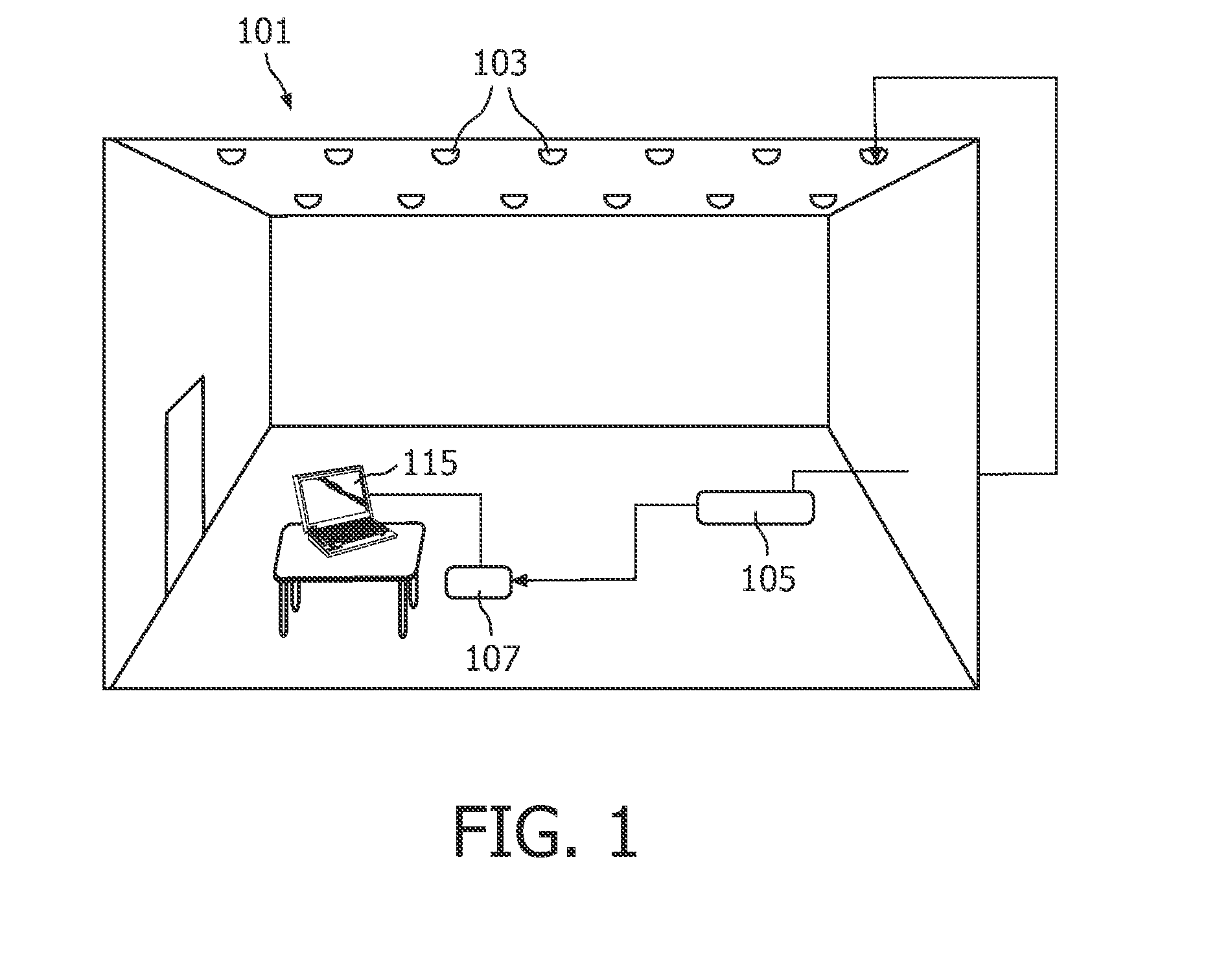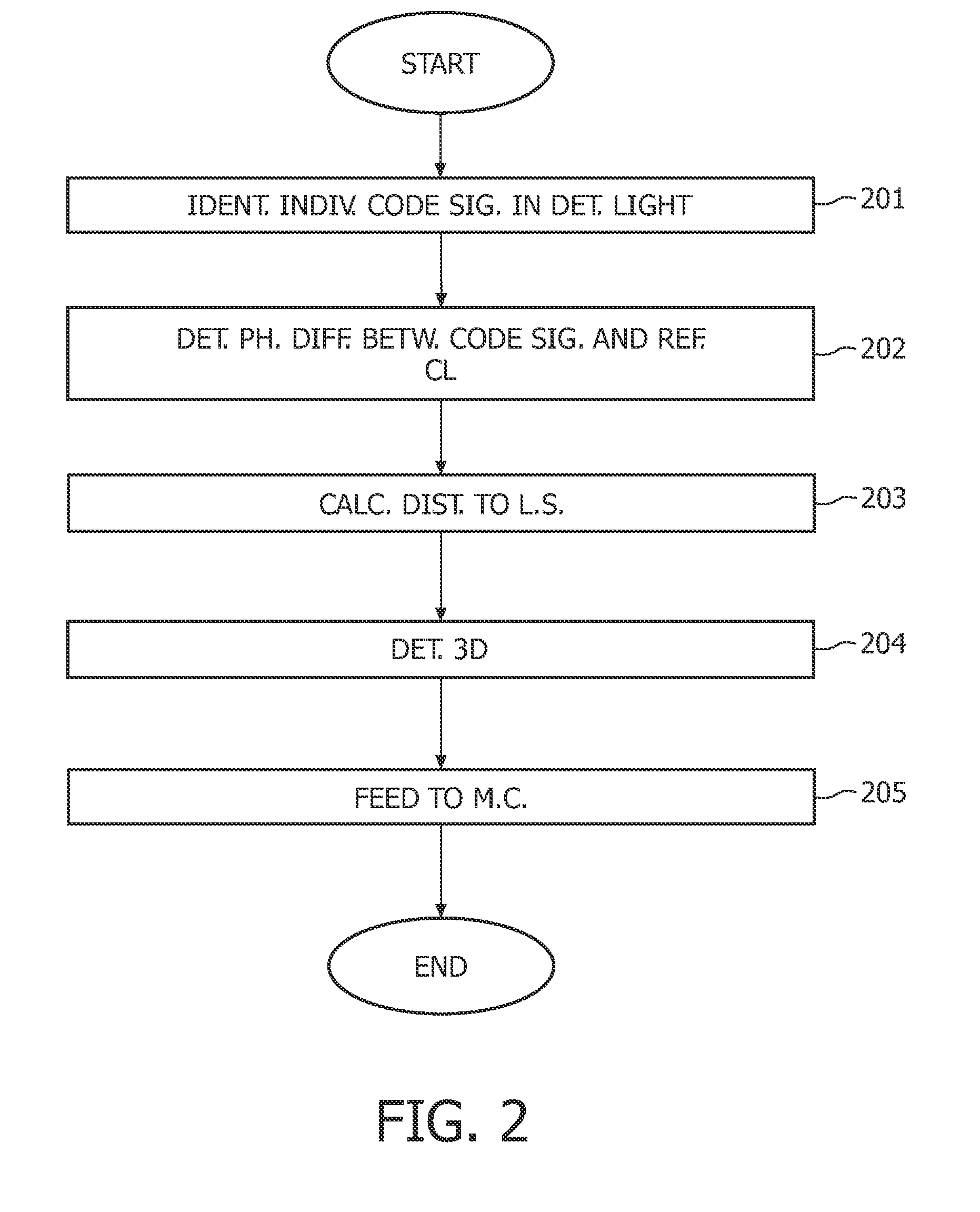Method for determining the position of an object in a structure
a technology for determining the position of objects and structures, applied in distance measurement, surveying and navigation, instruments, etc., can solve the problems of relatively complicated construction and inaccurate position, and achieve the effect of accurate position determination
- Summary
- Abstract
- Description
- Claims
- Application Information
AI Technical Summary
Benefits of technology
Problems solved by technology
Method used
Image
Examples
first embodiment
[0025]the method for determining the position of an object in a structure, as shown in FIG. 1, is applicable to a structure 101 where several light sources 103 are arranged, for example in the ceiling (or wall) of a room. An object 107 is in the structure 101. An embodiment of a position determination apparatus 109 provided in the object 107 comprises, as illustrated in FIG. 4, a light detector 111, such as for example a photodiode, and a processor 113, such as a DSP or a CPU. The light sources 103, which could typically be LEDs, are synchronized by a reference clock signal, or simply reference clock, generated by a reference clock signal generator 105. Further, the light detector 111 is also synchronized by the reference clock. The synchronization can be made in any appropriate way as known to a person skilled in the art, wherein the reference signal generator 105 can be a separate device arranged in the structure 101 or be a virtual device representing a common reference clock. Th...
second embodiment
[0029]In the method, the light sources 103 are not synchronized with the light detector 111, but are still mutually synchronized. Then it is a bit more complicated to determine an accurate position. Let us still assume that a 3D position is to be achieved. The light emitted from at least four light sources 103 is needed. By measuring the phase differences between two code signals, the difference in length between the corresponding light sources and the detector 111 is calculated. By calculating at least three such phase differences, i.e. between said at least four light sources 103, it is possible to solving an equation system which gives the distances between the object 107 and the light sources, whereby the 3D position of the object is determined like above.
third embodiment
[0030]However, to obtain a more accurate result, the following steps are performed. First all individual code signals in the detected light are identified, at step 301 (FIG. 3). A 2D matrix is then arranged of all possible pairs of code signals, at step 302. At step 303, the phase difference is calculated for each pair. An arbitrary combination of three phase differences is used for calculating a first 3D position. Using a numerical procedure for calculating the distance from the first 3D position to each one of all other possible positions, results in finding a position with a minimum for the sum of the distances.
[0031]There are several alternative methods to the second embodiment for determining the position when the detector 111 is not synchronized with the light sources 103. Thus, an alternative method is to repeat the steps of the second embodiment above for all possible combinations of 4 light sources 103 and then average the results. Another embodiment includes detecting the...
PUM
 Login to View More
Login to View More Abstract
Description
Claims
Application Information
 Login to View More
Login to View More - R&D
- Intellectual Property
- Life Sciences
- Materials
- Tech Scout
- Unparalleled Data Quality
- Higher Quality Content
- 60% Fewer Hallucinations
Browse by: Latest US Patents, China's latest patents, Technical Efficacy Thesaurus, Application Domain, Technology Topic, Popular Technical Reports.
© 2025 PatSnap. All rights reserved.Legal|Privacy policy|Modern Slavery Act Transparency Statement|Sitemap|About US| Contact US: help@patsnap.com



